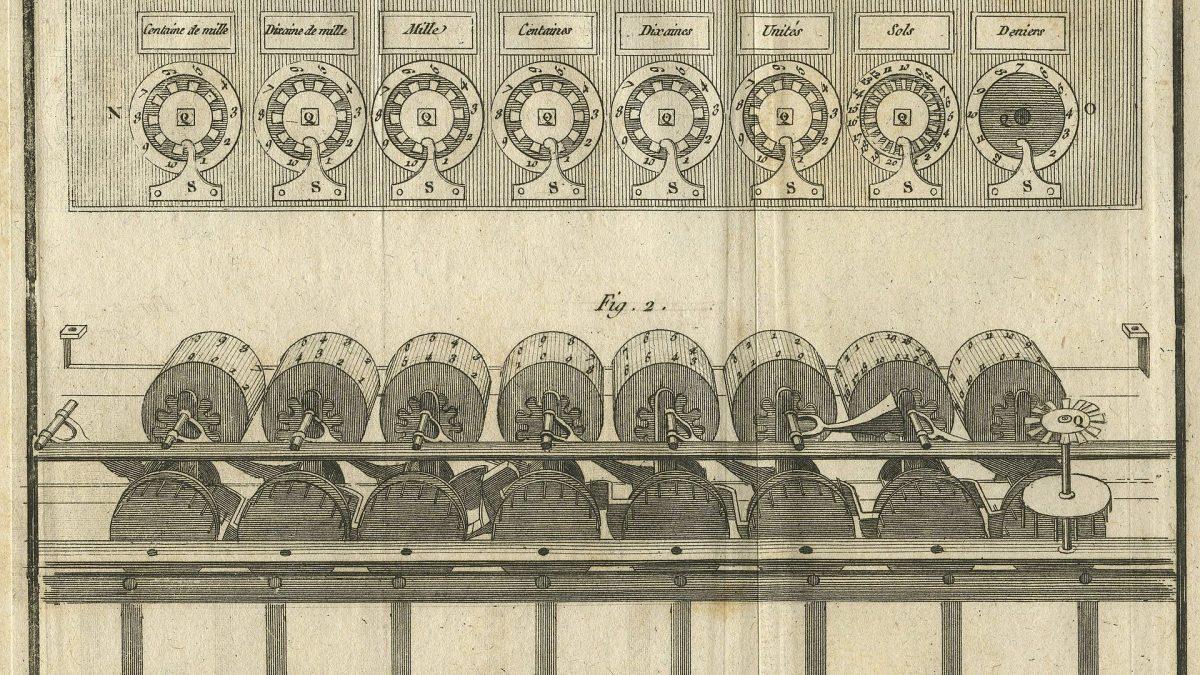Il calcolatore di Pascal (noto anche come macchina aritmetica o Pascaline) è un calcolatore meccanico inventato da Blaise Pascal all’inizio del XVII secolo. Pascal fu invogliato a sviluppare una calcolatrice osservando i laboriosi calcoli aritmetici richiesti dal lavoro di suo padre come supervisore delle tasse a Rouen. Ha progettato questa semplice macchina per aggiungere e sottrarre direttamente due numeri e per eseguire la moltiplicazione e la divisione attraverso ripetute aggiunte o sottrazioni.
Il calcolatore di Pascal ha avuto particolare successo nella progettazione del suo meccanismo di trasporto, che aggiunge da 1 a 9 su un quadrante, e quando cambia da 9 a 0, porta 1 al quadrante successivo. Praticamente ha inventato il meccanismo di riporto usato fino ai nostri tempi in tutte le calcolatrici meccaniche e nei contachilometri (odometri) delle autovetture (Naturalmente quelli meccanici) e pure nei contatori dell’energia elettrica e del metano.
Pascal progettò la macchina nel 1642, e dopo 50 prototipi, la presentò al pubblico nel 1645, dedicandola a Pierre Séguier, allora cancelliere della Francia. Pascal costruì circa venti macchine in più durante il decennio successivo, molte delle quali migliorarono il suo design originale. Nel 1649, il re Luigi XIV di Francia concesse a Pascal un privilegio reale (simile a un brevetto), che gli conferiva il diritto esclusivo di progettare e fabbricare macchine da calcolo in Francia. Esistono attualmente nove calcolatori Pascal, la maggior parte sono esposti nei musei europei.
Era una macchina, più da salotto, piuttosto che un oggetto da usare nella vita pratica degli “uffici” d’allora, ma dette un notevole impulso per lo sviluppo di altri calcolatori più evoluti e performanti.
Molti calcolatori successivi o furono direttamente ispirati, o modellati dalle stesse influenze storiche che portarono a, l’invenzione di Pascal. Gottfried Leibniz ha inventato le sue ruote Leibniz dopo il 1671, dopo aver provato ad aggiungere una funzione di moltiplicazione automatica alla Pascaline. Nel 1820, Thomas de Colmar progettò il suo aritmometro, il primo calcolatore meccanico abbastanza forte e affidabile da poter essere utilizzato quotidianamente in un ambiente d’ufficio.


